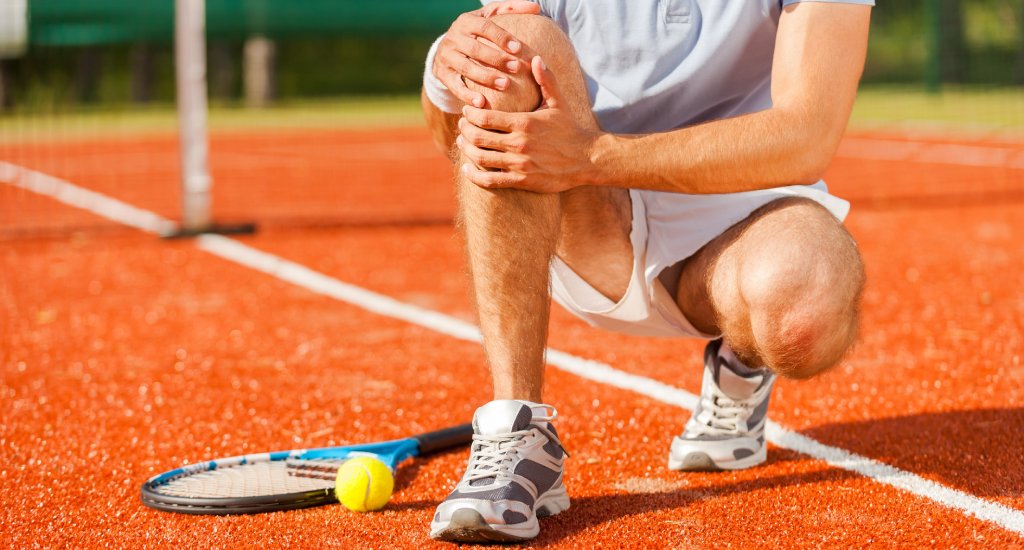Tennis
Common Tennis injuries and how to solve them

Tennis And Sports Injuries
We understand that as a tennis enthusiast, you put your heart and soul into the game. This exhilarating sport demands exceptional cardiovascular endurance, as players continuously sprint and cover substantial distances across the court. The explosive movements involved in serving and returning shots rely heavily on powerful leg muscles and quick reflexes.
Additionally, tennis demands strong core stability and upper body strength to generate powerful strokes and maintain balance during rapid changes of direction. Furthermore, the repetitive nature of the sport places strain on joints and muscles, emphasizing the importance of flexibility and injury prevention. Tennis is not only a mentally challenging sport, but it also demands a well-rounded athlete who can meet the physical demands of the game and sustain peak performance throughout matches.

Solve Your Tennis Injury Today
Book now with one of our qualified therapists who are ready and waiting to help solve your tennis injury.
Book AppointmentCommon Tennis Injuries
Here are some of the most tennis injuries we see at the Horsham Sports Injury Clinic
Tennis Elbow (Lateral Epicondylitis)
Overuse of the forearm muscles, particularly the extensor tendons, which causes inflammation and microtears in the tendons attached to the lateral epicondyle of the elbow. This is often due to repetitive gripping and swinging motions during tennis.
Shoulder Impingement
Repeated overhead motions like serving and overhead shots can lead to shoulder impingement. It occurs when the tendons of the rotator cuff and the bursa within the shoulder joint get pinched or compressed, causing inflammation and pain.
Sprained Ankle
Quick lateral movements, sudden stops, and changes in direction during tennis can lead to sprained ankles. These movements put stress on the ankle ligaments, causing them to stretch beyond their normal range, resulting in injury
Achilles Tendonitis
The repetitive nature of tennis movements, such as frequent forward and backward running and quick stops, can strain the Achilles tendon, leading to inflammation and microtears
Knee Ligament Injuries (such as ACL or MCL tears)
Sudden changes in direction, deceleration, or awkward landings during tennis can put excessive stress on the knee ligaments, leading to tears or sprains
Shin Splints
Shin splints often result from the repetitive impact of running and jumping during tennis. The muscles and tendons surrounding the shinbone become overworked and inflamed
Back Strain
Tennis involves frequent rotation and bending, which can strain the muscles and ligaments of the back. Poor posture, weak core muscles, and improper technique can also contribute to back injuries
Hamstring Strain
Quick acceleration, sudden stops, and explosive movements during tennis can strain the hamstring muscles at the back of the thigh
Calf Strain
Intense running, especially on hard surfaces, can lead to calf strains as the calf muscles are responsible for propelling the body forward during tennis
At Home Treatment Options
Here are some at-home exercises that can help prevent tennis injuries
Shoulder External Rotation Exercise
- Stand with your arms bent at 90 degrees and your elbows close to your sides
- Hold a resistance band or a light dumbbell in each hand
- Rotate your forearms outward, keeping your elbows tucked in, until your hands are at shoulder level
- Slowly return to the starting position
- Perform 2-3 sets of 10-15 repetitions to strengthen the rotator cuff muscles and improve shoulder stability
Ankle Circles
- Sit on a chair with one leg lifted and extended
- Rotate your ankle in circular motions, first clockwise and then counterclockwise
- Perform 10-15 circles in each direction for each ankle
- This exercise helps improve ankle flexibility and stability, reducing the risk of sprains
Calf Raises
- Stand with your feet hip-width apart, near a wall or a stable surface for support
- Rise up on your toes, lifting your heels off the ground
- Slowly lower your heels back down
- Perform 2-3 sets of 15-20 repetitions to strengthen the calf muscles and improve stability
Lunges
- Stand with your feet together and take a step forward with one leg, lowering your body until both knees are bent at 90-degree angles
- Push back to the starting position and repeat on the other leg
- Perform 2-3 sets of 10-12 repetitions on each leg to strengthen the quadriceps, hamstrings, and glutes, promoting better knee stability
Plank
- Get into a push-up position with your hands directly under your shoulders and your body in a straight line from head to heels
- Hold this position for 30 seconds to 1 minute, engaging your core muscles
- Perform 2-3 sets to improve core strength and stability, which can help prevent back injuries
Wrist Flexor and Extensor Stretch
- Extend one arm in front of you with your palm facing down
- Use your other hand to gently pull the fingers of the extended hand towards you to stretch the wrist flexors
- Repeat the stretch with the palm facing up to target the wrist extensors
- Hold each stretch for 15-20 seconds on each hand
Testimonials
Hear What Our Patients Say



